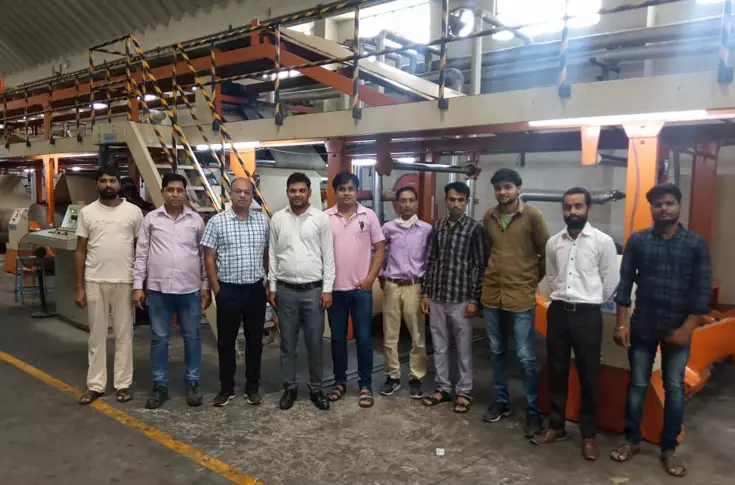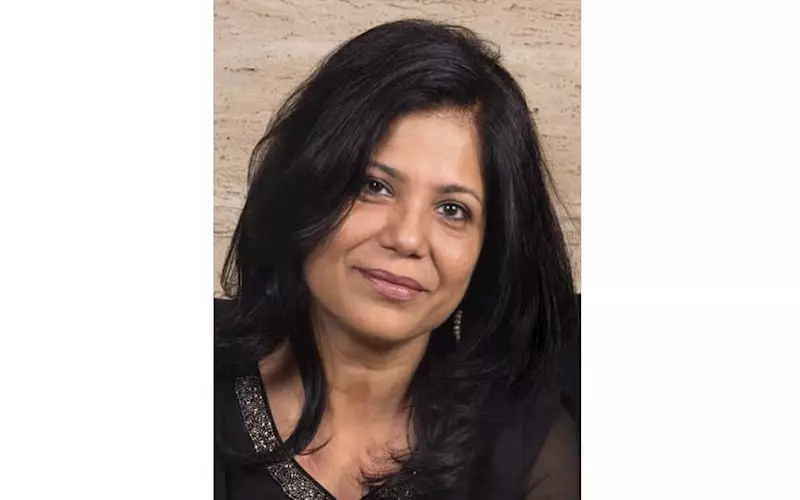Print is Proof is about the credibility of print: Kaacon Sethi
The first Print is Proof ad is a part of a two-month campaign. The Dainik Bhaskar Group, The Times of India Group, The HT Media Group and The Hindu came together in the first round. Many more will join in the second round. Kaacon Sethi, chief corporate marketing officer at DB Corp, says: “Dainik Bhaskar has acted as a catalyst. The Print is Proof campaign belongs to the print industry. It is a momentous occasion as it has brought the industry together without the help of a common platform."
06 May 2019 | By Dibyajyoti Sarma
Dibyajyoti Sarma (DS): Why the Print is Proof campaign?
Kaacon Sethi (KS): We wanted to bring together a common voice to highlight the credibility aspect of print, the process, fact-checking, source verification. We believe this is important for the public to understand — the rigour, the journalistic discipline.
DS: What does the campaign propose to do?
KS: The campaign is self-explanatory. Print has the edge because no one edits the editor. No one steers our opinion. News in print does not feed on sensation, conjecture or manipulation of facts. There is a strong, institutionalised newsroom and verification system. Knowledge and skills are imparted to ensure there is systematic monitoring, investigating and reporting on disinformation.
DS: Few of the leading newspapers have come together. Which newspapers and why?
KS: The Dainik Bhaskar Group, The Times of India Group, The HT Media Group and The Hindu came together in the first round. While Dainik Bhaskar was the catalyst, a common platform with shared objectives, a fair system of addressing creative calls and a genuine desire to bring the campaign to light has become the guiding force of the initiative.
DS: More will join in the second round. Can you share more names?
KS: Dainik Jagran and Lokmat have shown a definite interest. They will be joining in the second round. The initiative members are talking to other large groups like Eenadu and Malayalam Manorama.
DS: How long shall this campaign be sustained? What's been the response?
KS: The response has been very encouraging. The campaign has been widely noted. All trade platforms have given support gratis to the platform through emailers of the ads. The campaign has earned significant media. It has attracted other houses to join the campaign.
DS: Print is growing and continues to enjoy the second largest status in the Adex.
KS: The volume of Hindi print media is growing by 4%, as per Adex for the period April 2018 to February 2019.
During the same period, print media in several other languages have showed growth trajectory. These include Marathi (1%); Kannada (7%); Odiya (5%); Assamese (6%); and Urdu (6%).

DS: Circulations are growing, cover price is on the rise, language markets are growing and new geographies are coming under the ambit of print...
KS: True. As per ABC report, the circulation of print is growing at CAGR of around 5%, while for Indian languages, CAGR growth is around 9% for last 10 years. Dainik Bhaskar has witnessed circulation revenue growth of around 13.5% for the last six years.
DS: how so?
KS: We have mostly driven cover price growth which has contributed around 10%. Our average cover price has grown from Rs 2.50 seven years back to around Rs 4.15 average. This is important as on a higher cover price, we are able to increase our circulation from 5.04-million to around 5.8-million, around 18% growth, in the last 18 months. These are in the legacy markets of Rajasthan, Gujarat and Madhya Pradesh and the new market of Bihar. It is a testimony to the growing demand for print media as a credible news carrier.
DS: Despite Indians embracing the online space, traditional media continues to dominate marketing spend. Which territories are seeing growth?
KS: Markets like Rajasthan, Gujarat, Bihar, Maharashtra continue to grow.

DS: How to do print in a world that's gone digital?
KS: The role of each medium in the marketing playbook is becoming clearer. Print's performance orientation, the credible environment, these aspects are playing an important role in how marketers are on-boarding print in their media plans. At the same time in keeping with the change of format requirement, every newspaper brand worth its salt is also building online versions of their newspaper brands.
DS: What is happening to the structural and macroeconomic factors in the newspaper universe? Very little is shared about the giant strides in technology.
KS: All major newspapers are embracing new technology in editorial, news collection and dispatches and have invested heavily in new print technology to ensure better print quality and faster speed, to ensure more updated news and to cater to growing print demand in respective of their cities. In the last one year, almost 15-25 new printing plants by all the major newspaper houses have sprung up, countrywide.

DS: What is the progress at Dainik Bhaskar?
KS: The Dainik Bhaskar group has invested 2.85-billion in 2009 to upgrade all premium editions and invested in KBA technology from Germany. This is a first for an Indian language. We have installed KBA machines in Ahmedabad, Jaipur and Indore — our three major editions. The KBA presses enable us to print, 255,000 copies per hour, with 32 pages all-colour, at premium quality. This speed enables us to produce daily news to the press, as late as one am. In fact, the latest technology has also enabled us to print news the same day, as late as 3.30 am. Be it: Nirbhaya's death, or the Yakub Memon Supreme Court sitting, which decided the death sentence at 5 am, or Baba Ramdev fleeing the Ramlila ground at 2.15 am.
DS: Is there a print appreciation course for the new age millenials? How does one spread the good word?
KS: Almost all media and B-schools in the country cover the study of the print medium as much as TV and radio.
DS: Let me re-phrase my question. Is there a new mantra we need to re-invent about how to market a printed newspaper?
KS: There is no need to reinvent. The marketing of newspapers has evolved over a period of time and readers clearly understand the benefits of a newspaper. The knowledge benefit, which is a good habit, is an important peg in the marketing of newspapers.
DS: Many national and international organisations are making misleading anti-print and paper messages in their customer communications. The world’s largest companies are telling tens-of-millions of their customers that paper is bad for the environment. This is a falsehood. So how does one counter this false go green and go paperless message?
KS: Please understand, almost all newspaper production deploy 95-98% of recycled paper to make a newspaper. So manufacturers are ensuring environmental concerns in mind.
DS: They say the publications’ growth in the region will depend largely on local partnerships. What are we seeing on this front?
KS: We are witnessing major growth in circulation and readership in our legacy markets, like MP-CG Rajasthan Gujarat, etc and newer markets of Bihar, which is a huge achievement. Since conventionally, only new player expands and shakes old print penetrated market and not an older established player.
DS: Apps have reinvigorated the publishing business model, and online is no longer the threat to print that it once was? Any success on this front?
KS: The New York Times has reinvented this model and both app, digital and hard copy are co existing and growing. On similar lines, we have also taken initiatives.
DS: Print innovations that you have across that need to be shouted about!
KS: Well, there are several physical format innovations that keep happening from time to time. The most important role of print is to drive performance of brands.














 See All
See All